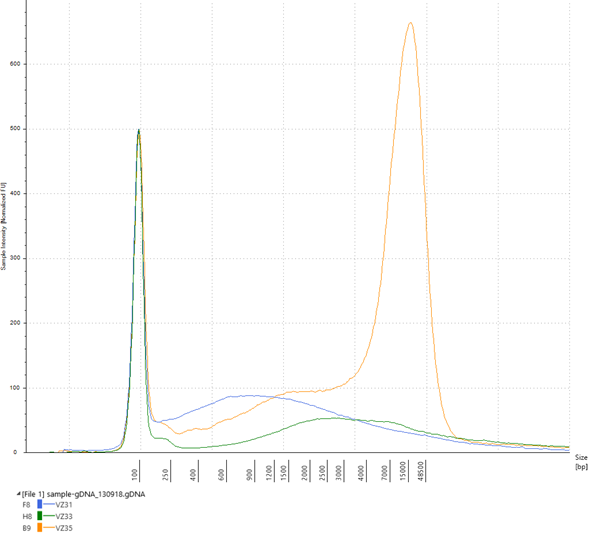Tips include what to do if insufficient sample migration occurs and why you should look for contamination patterns in graph.
Flick Screen Tape to eliminate bubbles.

Huiyan Jin
NGS Field Application Scientist, North America
If insufficient sample migration occurs, dilute samples to a lower buffer salt concentration.

Kicki Bergefall
FAS Manager – Europe

Figure 1: Illustrating the differences in quality of input DNA. Blue trace is poor quality FFPE sample with a DIN of 2.3. Green trace is good quality FFPE sample with a DIN score of 5.6. Orange trace is a good quality whole blood DNA sample with a DIN score of 6.5.
Bring all reagents to room temperature.

Kicki Bergefall
FAS Manager - Europe
Protect reagents and working solution from light.

Serena Pace
NGS Field Application Scientist, North America
Do not hold assay tubes in hand before measurement.

Pete Gray
Array and NGS Field Application Specialist, Europe
Follow recommended incubation times.

Huiyan Jin
NGS Field Application Scientist, North America
If your reading is too high, dilute samples.

Serena Pace
NGS Field Application Scientist, North America
If you reading is too low, protect from light which diminishes sample signal and check standard tube readings for accuracy.

Kicki Bergefall
FAS Manager - Europe
Carryover contamination may decrease or increase readings, look for contamination patterns in graph.

Pete Gray
Array and NGS Field Application Specialist, Europe
Check blanking reagent, be sure to use a similar pH and ionic strength as samples solutions to maximise Nanodrop accuracy.

Huiyan Jin
NGS Field Application Scientist, North America
